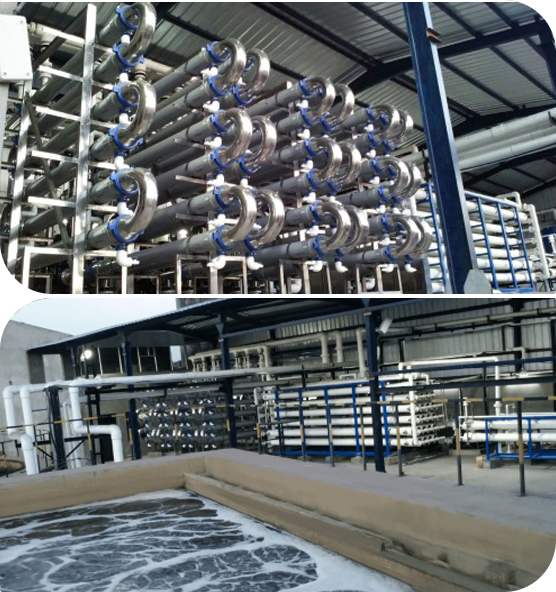
Waterman Engineers Australia is among the foremost brands of Zero Liquid Discharge method. A ZLD method is actually a treatment method course of action which happens to be used to eliminate all the liquid squander from the program. The aim of ZLD water cure is to scale back wastewater economically and produce potable drinking water that's healthy for standard use. Zero discharge program is an advanced therapy method that comprises ultrafiltration, reverse osmosis, evaporation and fractional electro deionization. And we've been a properly-identified provider of ZLD programs.
In many Industries, which include electricity, oil & gas, chemical compounds, mining and Other folks, a great deal of wastewater is produced that should be managed. Conventionally, this discharge of wastewater is completed by using a plant outfall into a area drinking water system like an evaporation pond, or in some instances deep well injected. These procedures lead to a lot of environmental concerns by the public in lots of locations of the whole world, as water is a scarce source and its management must be monitored. These concerns have resulted while in the institution of ZLD procedures by numerous industries to minimize their environmental footprint and enrich sustainability. And, Waterman Engineers Australia are best ZLD suppliers you will find for This method.
PROPERTIES OF ZERO LIQUID DISCHARGE Method
The Homes of the Zero Liquid Discharge process will vary with regards to the precise structure and technologies employed. Even so, some prevalent Houses of ZLD devices involve:
H2o Conservation: Amongst the primary targets of ZLD units should be to preserve drinking water by minimizing the discharge of liquid squander in the natural environment.
Significant Drinking water Purity: ZLD techniques are made to produce high-high-quality drinking water which is totally free from impurities and contaminants, that makes them suited to use in many industrial procedures.
Versatility: ZLD systems will often be made to accommodate a wide selection of enter liquid streams, which makes them functional and appropriate for use in various industries.
State-of-the-art Wastewater Remedy: Zero liquid discharge systems use Innovative wastewater therapy techniques to eliminate impurities and contaminants with the effluent, generating superior-top quality h2o.
Squander Reduction: ZLD techniques assistance decrease waste by lessening the volume of liquid waste that needs to be disposed of and by developing a concentrated, strong waste substance that can be securely disposed of.
Strength Performance: ZLD systems could be Strength-intense due to the higher Strength necessities of evaporation and other wastewater therapy processes. Nonetheless, improvements in know-how are earning Zero liquid discharge units more energy-efficient and price-effective.
Waterman Engineers Australia manufactures Zero Liquid Discharge (ZLD) methods created to get rid of all liquid waste, aiming to generate potable h2o and lower environmental influence. Their ZLD methods generally incorporate ultrafiltration, reverse osmosis, evaporation, and fractional electro deionization. Crucial technologies made use of are Slipping Film Brine Concentrators, Compelled Circulation Crystallizer, and Other folks, using a two-stage means of pre-concentration and evaporation/crystallization to recover and reuse drinking water. These programs are adaptable to distinct industries, emphasizing h2o conservation, substantial water purity, squander reduction, and Power performance. Specialized technical specs are assorted and customizable, thinking about things like drinking water resource, movement level, and feed water high-quality.
The need for Zero Liquid Discharge (ZLD) devices occurs through the requirement to Zld System Manufacturer Zero Liquid Discharge System handle environmental problems linked to h2o scarcity and air pollution. In industries like electrical power, oil & fuel, and mining, huge amounts of wastewater are created. Historically, this wastewater is discharged into bodies of drinking water, triggering pollution and depleting cleanse h2o sources. ZLD programs purpose to attenuate these impacts by treating and recycling wastewater inside of the commercial system, thereby conserving water, lowering waste, and advertising sustainability.
When it comes to the complex technical specs of the Zero Liquid Discharge (ZLD) procedure, important elements to target include things like the drinking water supply it can take care of, the process's move level, the standard of feed drinking water, the phases of treatment method concerned, the Restoration fee of drinking water, procedures for concentrate disposal, components of building, operating problems, and process automation and Handle. These aspects ensure the procedure's success, toughness, and efficiency in managing and recycling industrial wastewater.
Zero Liquid Discharge (ZLD) vegetation supply Advantages such as h2o conservation, waste reduction, and air pollution prevention, contributing to environmental sustainability. They are relevant in industries like electrical power technology, oil and gasoline, chemicals, and mining, where by they help in controlling industrial wastewater properly, reducing the ecological footprint, and complying with rigorous environmental rules. These systems are important in places struggling with drinking water scarcity and for industries aiming to further improve their sustainability and operational efficiency.
FAQs for your Zero Liquid Discharge (ZLD) method generally address its operational rules, cost-success, upkeep requirements, environmental affect, applicability throughout numerous industries, and regulatory compliance. These inquiries help consumers have an understanding of the method's Positive aspects, technological requires, and suitability for their certain wastewater management demands.
one. Zero Liquid Discharge (ZLD) is usually a wastewater therapy method built to reduce all liquid squander.
two. The procedure's components are influenced by the specific industrial process, wastewater composition, and regulatory specifications.
3. Effluent therapy plants get rid of pollutants from textile effluents to stop environmental contamination.
4. Benefits contain water conservation, air pollution reduction, and regulatory compliance.
five. The target is to reduce environmental affect by recycling water and decreasing squander.
six-9. Effluent therapy crops are levels in wastewater treatment method: Principal (Bodily separation), secondary (Organic procedure), and tertiary (State-of-the-art treatment method).
10. Device operations consist of filtration, sedimentation, Organic treatment method, and disinfection.
11. Restricting parameters are variables that have an effect on the therapy's performance, like pH and contaminant concentration.
twelve. Layout concerns include stream charge, effluent composition, and desired high-quality of taken care of h2o.